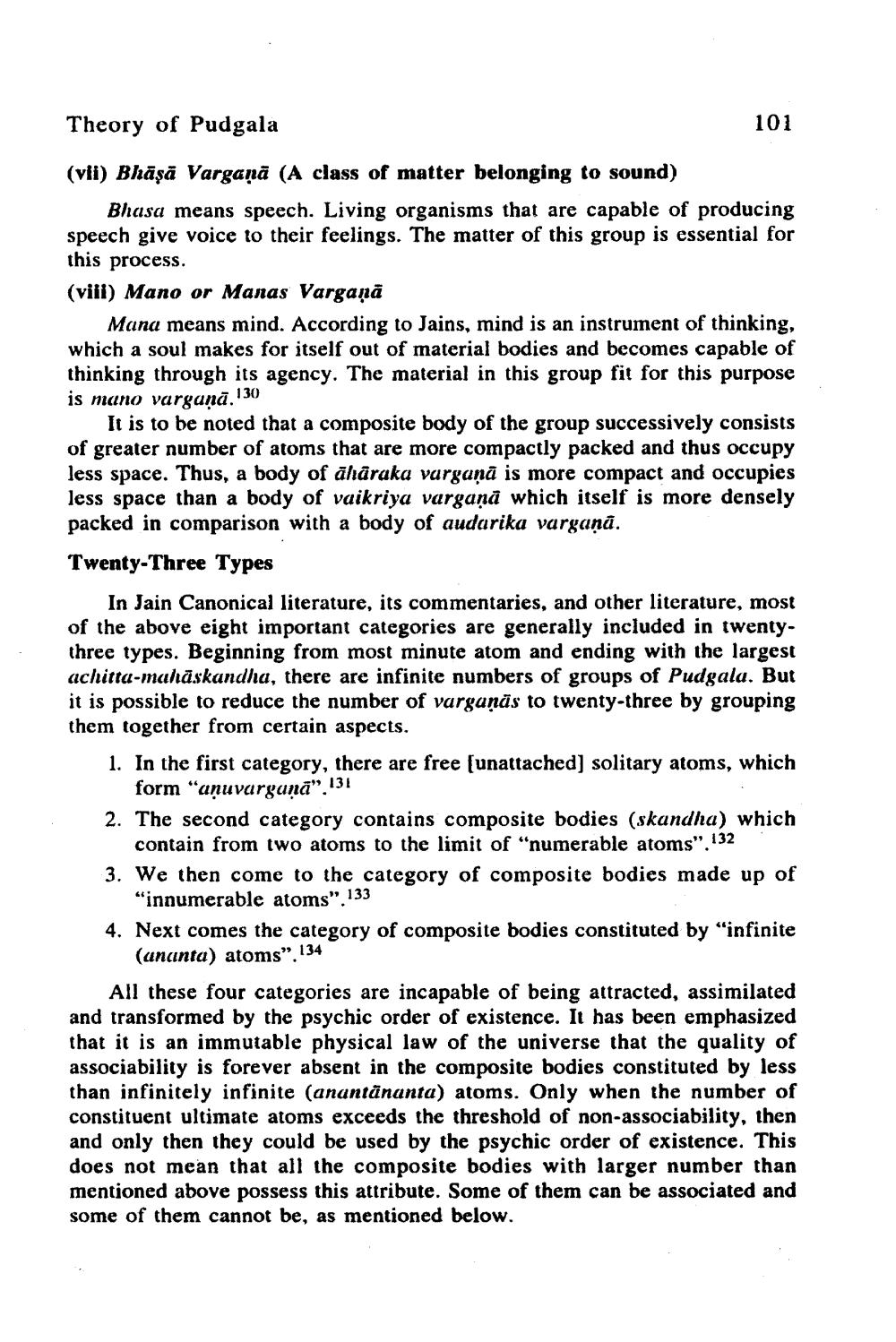________________
Theory of Pudgala
101
(vii) Bhāṣā Varganā (A class of matter belonging to sound)
Bhasa means speech. Living organisms that are capable of producing speech give voice to their feelings. The matter of this group is essential for this process. (viii) Mano or Manas Vargaņā
Mana means mind. According to Jains, mind is an instrument of thinking, which a soul makes for itself out of material bodies and becomes capable of thinking through its agency. The material in this group fit for this purpose is mano varguņā. 130
It is to be noted that a composite body of the group successively consists of greater number of atoms that are more compactly packed and thus occupy less space. Thus, a body of āhāraka vargaņā is more compact and occupies less space than a body of vaikriya vargană which itself is more densely packed in comparison with a body of audarika varganā. Twenty-Three Types
In Jain Canonical literature, its commentaries, and other literature, most of the above eight important categories are generally included in twentythree types. Beginning from most minute atom and ending with the largest achitta-mahāskandha, there are infinite numbers of groups of Pudgala. But it is possible to reduce the number of varganäs to twenty-three by grouping them together from certain aspects.
1. In the first category, there are free (unattached] solitary atoms, which
form "anuvargunā". 131 2. The second category contains composite bodies (skandha) which
contain from two atoms to the limit of "numerable atoms". 132 3. We then come to the category of composite bodies made up of
"innumerable atoms". 133 4. Next comes the category of composite bodies constituted by "infinite
(unanta) atoms”. 134 All these four categories are incapable of being attracted, assimilated and transformed by the psychic order of existence. It has been emphasized that it is an immutable physical law of the universe that the quality of associability is forever absent in the composite bodies constituted by less than infinitely infinite (anantānanta) atoms. Only when the number of constituent ultimate atoms exceeds the threshold of non-associability, then and only then they could be used by the psychic order of existence. This does not mean that all the composite bodies with larger number than mentioned above possess this attribute. Some of them can be associated and some of them cannot be, as mentioned below.




